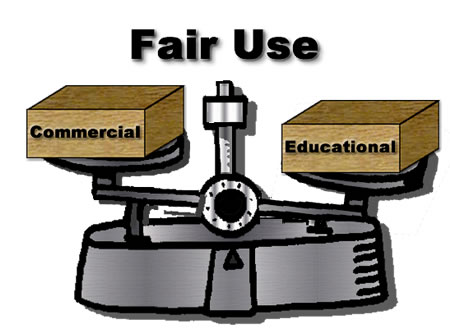Fair Use Act

The Fair Use Act is a very vague and "shadowy" law and there are many Web sites that try to interpret the law in easier to understand language. There are several parts to the Fair Use Act, but for this lesson we are only concerned with copying text or images from someone else's work.
There are tests to help you determine if the use of someone else's work falls under Fair Use.
- Does the source say you can use the information or images in your own work? There are many Web sites that offer royalty- free (no cost) images that you can legally use. Even if you use an image from one of these sites you still must cite your source.
- Is it an original work? This one can be tricky. For example, a list of movies currently showing at the movie theater would not be considered original work, but someone's rating and commentary on a movie would be copyrighted.
- Is it very old? Some very old works (created before 1923) are considered "Public Domain" and are not covered by copyright. You need to be aware, though, that even though the "Mona Lisa" is considered public domain, a photograph that someone else took of the painting since 1923 would be copyrighted.
- Was it published by the government? Anything published by the government is considered public domain.
- Will you be using the material for educational purposes? Even if it is for educational purposes, there is a limit on how much of the material can be used from any source. For more information on copyright laws and usage, visit one of the following web site: U.S. Copyright Office Fair Use Index.
Next 
|